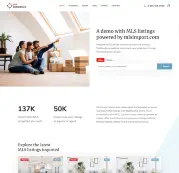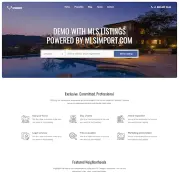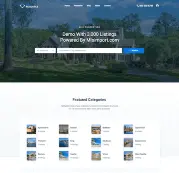In New York’s busy real estate world, MLS is really important for making property deals smoother. It provides detailed information about properties, including location, price, and features, making it easier for buyers to find suitable homes and for sellers to reach potential buyers quickly.
The MLS is more than just a listing service; it’s a collaborative platform that fosters transparency and efficiency in New York’s dynamic real estate market, benefiting real estate professionals and clients.
History of MLS in New York
The history of the Multiple Listing Service (MLS) in New York is a tale of evolution and adaptation in the real estate industry. Initially, MLS began as a simple agreement among agents to share property listings and commissions.
This cooperative effort laid the foundation for a more structured system. Over the years, New York’s MLS has transformed significantly.
In its early stages, listings were shared through basic catalogs and bulletins, a manual and time-consuming process. However, as technology advanced, so did the MLS.
The arrival of the internet brought a significant change. Online MLS platforms emerged, revolutionizing how property information was shared and accessed.
These digital systems offered real-time updates, detailed property information, and high-quality photographs, vastly improving efficiency and reach. The MLS in New York adapted to these technological advancements, becoming more user-friendly and accessible to a broader range of real estate professionals and clients.
Today, New York’s MLSs are a sophisticated digital platform integral to the real estate market. They connect agents, buyers, and sellers, ensuring a smoother transaction process. Additionally, with MLS IDX integration, these platforms allow real estate websites to display up-to-date property listings, enhancing online property search for users.
This evolution from a simple listing exchange to a comprehensive digital marketplace highlights the MLS’s role in responding to the needs of a dynamic and complex real estate environment in New York.
The Major MLSs in New York state
New York State has several prominent Multiple Listing Services (MLS) that cater to different regions and markets within the state.
Here are descriptions and website links for some of the major MLS systems in New York State:
- OneKey MLS: This is one of the largest MLSs in New York, formed through the merger of the Multiple Listing Service of Long Island and the Hudson Gateway Multiple Listing Service. It serves Long Island, Manhattan, and the Lower Hudson Valley and is the largest REALTOR®-run MLS in the state. You can find out more on their website: https://www.onekeymls.com/ or in this article: OneKey MLS – the biggest MLS in the New York area.
- New York State Alliance MLS (NYSAM): Serving Western New York, including Buffalo and Rochester, this MLS provides extensive property listings in these regions. It is a statewide MLS covering all 62 counties, including the five boroughs of NYC, catering to brokers, agents, appraisers, and auctioneers. Here is their website: https://www.nystatemls.com/
- Global MLS: This serves the Capital Region, including Albany, and extends to other parts of Upstate New York. It’s known for its comprehensive listings in these areas. More details are available on their website: https://globalmls.com/
- Staten Island Board of REALTORS® (SIBOR): SIBOR operates the Staten Island MLS, providing detailed real estate listings specific to Staten Island. Here is their web page: https://www.siborrealtors.com/
- Manhattan MLS (MANAR): Specifically catering to the Manhattan area, this MLS is essential for real estate transactions in one of New York’s most dynamic and high-value markets. Find out more on this Website:https://manar.realtymx.com/index.cfm?page=about.
- Brooklyn MLS: As the name suggests, this MLS focuses on Brooklyn, offering listings and real estate services specific to this borough. More details are available here: https://www.brooklynmls.com/
- Hudson Gateway Association of Realtors (HGAR): Protects buyers and sellers in the Hudson Valley, offering services and accurate data. More details here: https://www.hgar.com/
- Greater Syracuse Association of Realtors (GSAR)/Central New York Information Service (CNYIS): Leading organization in Central New York, offering real estate resources and services. Additional information can be found here https://www.cnyrealtor.com/
- Buffalo Niagara Association of Realtors (BNAR): Serves the Western NY real estate market and is dedicated to realtors in the Buffalo Niagara region. The website is https://www.bnar.org/
- Greater Rochester Association of Realtors (GRAR): A member organization engaged in all aspects of the real estate industry around Rochester. The association’s website is: https://www.grar.org/
Each MLS system has unique characteristics and coverage areas, collectively encompassing a wide range of properties across New York State. They play a crucial role in facilitating real estate transactions by providing comprehensive, localized listings and data to real estate professionals and their clients.
Special Consideration before joining a New York MLS
Before joining a New York MLS (Multiple Listing Service), consider these particular factors:
- Membership Requirements: Check eligibility criteria, like being a licensed real estate agent or broker, and any necessary affiliations with real estate associations.
- Costs and Fees: Understand the membership costs, transaction fees, and any additional charges.
- Coverage Area: Each MLS has a specific geographic focus. Choose one that aligns with your business area.
- Technology and Tools: Evaluate the MLS’s technology, tools, and support. Ensure they meet your needs for listing and searching properties.
- Training and Support: Some MLSs offer training and support. Consider the availability and quality of these resources.
- Rules and Regulations: Familiarize yourself with the MLS’s rules and regulations to ensure compliance and understand your obligations.
- Data Sharing and Cooperation: Understand how the MLS facilitates data sharing and cooperation among members and how this impacts your business.
- Networking Opportunities: Consider the networking and collaborative opportunities the MLS provides, which can be valuable for business growth.
The New York real estate market has several unique characteristics:
- Sky-High Prices: NYC is known for some of the highest real estate prices globally. In Manhattan, average apartment prices can reach several million dollars.
- Luxury and Iconic Skyscrapers: The city boasts numerous luxury skyscrapers and iconic buildings, like the Empire State Building, One World Trade Center, and residential skyscrapers on Billionaires’ Row.
- Diverse Neighborhoods: Each NYC neighborhood has its unique real estate market, with varying prices and styles. From the brownstones of Brooklyn to the luxury apartments in Manhattan, there’s a vast range of living experiences.
- Global Appeal: New York’s real estate market attracts significant international investment, making it a global hub for real estate.
- Co-op Apartments: A significant portion of NYC’s housing market consists of co-op apartments, where residents own shares in a building rather than the property itself.
- Historical Buildings: NYC is also known for its historical buildings, with some residential properties dating back to the 19th century.
- Stringent Rent Control Laws: The city has some of the most strict rent control and stabilization laws in the U.S., affecting a large portion of the rental market.
- Innovative Architecture: NYC continues to be at the forefront of architectural innovation, with new buildings often featuring cutting-edge design and luxury amenities.
- Market Resilience: Despite economic downturns and crises, New York’s real estate market has shown remarkable resilience, often bouncing back stronger.
- Small Living Spaces: Due to high prices and density, many New Yorkers live in relatively small spaces compared to other parts of the U.S.
- High Demand and Competitive Market: New York, especially NYC, is known for its high demand and competitive real estate environment.
- Seasonal Fluctuations: The market often experiences seasonal trends, with spring and fall particularly active.
How Regulations of Real Estate Affect the MLS in New York
The real estate market in New York is subject to complex regulations, which significantly influence how properties are sold, bought, and managed.
One key aspect is the stringent rent control and stabilization rules, particularly in New York City. These laws cap how much landlords can increase rent for certain apartments, aiming to keep housing affordable.
Additionally, New York rigorously enforces fair housing laws to prevent discrimination in real estate transactions. The state also has comprehensive building and safety codes to ensure that properties meet high construction and maintenance standards.
Another unique feature in New York, especially in NYC, is the prevalence of cooperative apartments, commonly known as co-ops. These entities have regulations, often including strict guidelines and approval processes for potential buyers.
In terms of transactions, sellers must provide detailed disclosure statements about the condition of their properties, adding a layer of transparency to the buying process.
Additionally, for homes built before 1978, there is a mandatory disclosure requirement regarding lead-based paint, a regulation aimed at safeguarding public health.
Also, if you plan to build a website, you need to be aware of MLS / IDX regulations and get trained in what IDX means.
While designed to protect consumers and ensure fair practices, these regulations complicate navigating the New York real estate market. They reflect the state’s commitment to maintaining high standards and ethical practices in real estate dealings while addressing specific local challenges like housing affordability and safety.
What is the process to join a MLS in New York?
Joining an MLS in New York typically involves the following steps:
- Licensure: You must be a New York real estate agent or broker.
- Real Estate Board Membership: Most MLSs require local or national real estate board membership.
- Application: Apply to the MLS. This may require proof of licensure and board membership.
- Fees: Pay any applicable application, membership, or subscription fees.
- Orientation and Training: Complete any required orientation sessions or training programs.
- Compliance: Agree to abide by the MLS rules and regulations.
- Technology Setup: Set up and familiarize yourself with the MLS’s software and tools.
Each MLS may have specific requirements or additional steps, so it’s advisable to contact the MLS directly for detailed instructions.
How to Build a Website with MLS in New York
Creating a website to showcase properties from a New York MLS involves several key steps:
- Integrate MLS Data: Connect the MLS data feeds to your Website.
- Compliance: Ensure your Website complies with data-sharing policies set by MLS providers.
- User-Friendly Design: Design an easy-to-use interface for property searches on your site.
To achieve this, you’ll need technical web development skills, real estate market knowledge, and cooperation with MLS providers for accurate listings.
The simplest way to build a real estate website is to use WordPress along with real estate themes and IDX plugins. A successful approach involves using WordPress, the WpResidence Real Estate Theme, and the MLSimport plugin.
Here are the key steps:
- Obtain API Key: Get an API key from your MLS provider to access their data. You can refer to RESO WEB API Connection details for more information.
- Set Up Hosting and WordPress: Choose a web hosting provider and install WordPress, the foundation of your Website.
- Install WpResidence Theme: Select and install the WpResidence theme within WordPress, tailored for real estate websites.
- Customize Theme Settings: Adjust the WpResidence theme to match your design preferences, including layout, colors, and property display options.
- Install MLSimport Plugin: Download and install the MLSimport plugin on your WordPress site. Configure it with the API key from step one to integrate MLS listings.
- Import and Set Up Properties: Use the plugin to import properties from the MLS to your Website. Define criteria for the properties you want to showcase.
- Launch and Test: After configuration and property import, thoroughly review your Website for any final adjustments. Test its functionality to ensure everything works as expected before officially launching it.
Following these streamlined steps, you can efficiently create a real estate website integrated with New York MLS listings.
Conclusion
In New York, the Multiple Listing Services (MLS) are crucial in real estate, offering detailed information on properties and enhancing transaction efficiency.
New York hosts several prominent MLSs, each catering to specific regions and markets, facilitating localized real estate transactions. Before joining an MLS, it’s important to consider factors like membership requirements, costs, coverage area, technology, and compliance with regulations.
New York’s real estate market is characterized by high prices, diverse neighborhoods, global appeal, and stringent regulations impacting MLS operations.
Table of Contents





